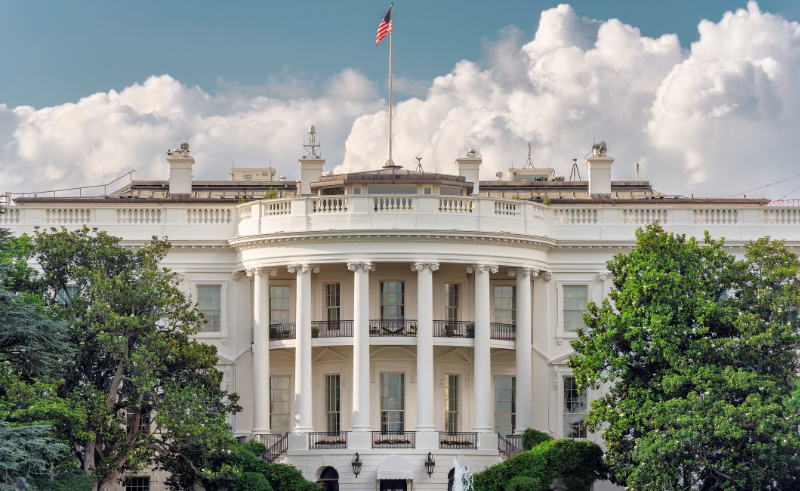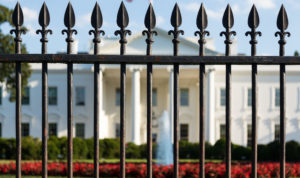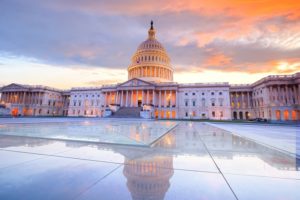
Some of President Trump’s deregulatory actions are innovations, others build on his predecessors’ work.
How should we best understand President Donald J. Trump’s approach to regulatory reform, relative to President Ronald Reagan’s approach nearly four decades ago? Not in glib terms of dramatic departure, but in the subtler terms of continuity, reform, and counter-reformation.
In some ways, President Trump’s approach echoes and elaborates President Reagan’s approach, especially on questions of cost-benefit analysis and White House oversight. But in other ways, the Trump Administration’s innovations differ starkly from the Reagan Administration approach, especially in the creation of regulatory budgets and the “one in, two out” standard in Executive Order 13,771.
Why has the Trump Administration chosen to innovate and differentiate itself from some Reagan reforms? The answer, quite simply, is that the Trump Administration has the advantage of learning from the Reagan Administration’s experience, and from the experience of four presidencies in between.
Continuity with Reagan. Consider first some of President Trump’s continuities with President Reagan. Most obviously, the Trump Administration has maintained the basic framework erected by President Reagan in Executive Order 12,291, and it manages executive agencies largely through the coordination and cost-benefit analyses overseen by the White House’s Office of Information and Regulatory Affairs (OIRA).
To be sure, the Trump Administration has continued the slow refinement and modernization of cost-benefit analysis. But by and large, the work of OIRA reflects the work of the Reagan Administration, the Clinton Administration, and the rest. The Reagan Administration’s formal codification and extension of practices that had arisen organically from the Nixon Administration onward succeeded in entrenching OIRA as a major institution of governance, and the Trump Administration is simply the latest Administration to maintain its inheritance.
In addition, the Trump Administration echoes the Reagan Administration’s recognition that the modern administrative state, like every other part of our administration, benefits from—indeed, requires—Hamiltonian “energy in the executive.” OIRA’s primary value is not just that it is a unit within the Administration that oversees cost-benefit analyses and interagency review of major regulations. OIRA’s central importance is that this function occurs in the White House.
With thanks to Justice Elena Kagan (and the article she wrote as a law professor), it is now a truism, but it is also true: Presidents oversee, direct, and sometimes even dictate the policies of their administrations. President Trump is, to say the least, no exception.
Perhaps most subtly, the Trump Administration understands what the Reagan Administration (and U.S. Supreme Court in the Reagan era) understood: that rulemaking and other forms of administrative policymaking are not just a matter of factual judgments, technical judgments, and legal interpretations. They are also a matter of value judgments, for which accountability must ultimately run to the people, through the President.
In these and other ways, the Trump Administration has kept and elaborated some of the Reagan Administration’s reforms. The Reagan reforms that were controversial and contested in the 1980s are now a matter of bipartisan consensus, even conventional wisdom.
Continuity with Reagan’s Successors. President Trump has also continued some of the post-Reagan Presidents’ innovations. Many of the Trump Administration’s most controversial tendencies stand in contrast with the Reagan Administration only because they reflect these post-Reagan developments.
For example, President Trump uses executive orders to direct agency policymaking discretion quite differently than President Reagan did—but quite similarly to the innovative way President Barack Obama used them.
Shortly after taking office, President Obama used executive orders and other presidential directives to launch regulatory reforms. Most notably, he used an executive order to reverse the course of agencies administering President George W. Bush’s policy on embryonic stem cell research, an approach that ultimately insulated those agencies from at least some of the ordinary judicial review that they otherwise would have undergone.
Similarly, President Obama used less formal presidential directives to kick-start his Administration’s dramatic and unprecedented approach to regulating greenhouse gas emissions. This use of executive power is an innovation that President Trump inherited and wielded energetically in his Administration’s early months, through subject-matter executive orders on energy policy, financial regulatory policy, and other matters.
President Trump also has followed recent predecessors’ example of undertaking major policy reforms through enforcement discretion. Years earlier, the George W. Bush Administration’s use of signing statements to assert executive power over statutory constraints attracted waves of criticism. So did the Obama Administration’s use of the Tailoring Rule in greenhouse gas emission regulation, its policy of selective marijuana-law nonenforcement, and, most controversially, its policy of selective immigration-law nonenforcement.
The Trump Administration’s own efforts to make policy through selective nonenforcement of laws, including its attempt to defer the effective dates of various Obama-era regulations, is best understood as just the latest form of policymaking-through-inaction—although, like many of his predecessors’ attempts, this approach sometimes fared poorly in court.
Genuine Innovations. But, of course, President Trump’s regulatory approach is not simply one of continuity; it has included genuine innovations that break not just with President Reagan but also with the subsequent four Presidents.
First and foremost is the Trump Administration’s decision to supplement cost-benefit analysis with direct cost analysis, better known as Executive Order 13,771’s “regulatory budget” approach. The Reagan Administration intended for cost-benefit analysis to be a brake on agencies’ self-interested assessments of their own regulations’ utility. And this approach has seen many successes. But as former OIRA Administrator Susan Dudley and others have observed, the putative net-benefit calculations offered by agencies—and often ratified by OIRA—increasingly seem far too malleable. Agencies “perpetuate puffery,” in Dudley’s felicitous words, and too often they get away with it.
This flexibility no doubt reflects the fact that agencies’ analysis of their own regulations’ benefits remains an extremely self-interested endeavor. The Trump Administration chose to focus not just on net benefits, but also on costs per se—recognizing that the government’s aggregate regulatory burdens should be seen as somewhat analogous to any family’s or company’s own aggregate expenditures.
Similarly, the Trump Administration’s Executive Order 13,371 requires agencies to cut two regulations for every new one it issues, another new metric for assessing and braking the general growth of aggregate regulatory burdens.
As Andrew Grossman has observed, Executive Order 13,371 is “a blunt tool to carry out a blunt agenda,” but “it has the virtue of honesty and simplicity. And there is not some other established means, some neutral criterion, by which a President who ran on a platform of deregulation can actually carry it out. This tells everyone where exactly to place the thumb on the scale.”
How will either of these approaches fare in the long run? It is far too soon to tell, and let us hope the experiment will run for a few more years—and a couple more presidencies—before anyone purports to declare victory or defeat.
Counter-Reformations. Finally, one should note these reformations already have spurred counter-reformations, especially among the President’s critics. Where conventional wisdom long held that administrative law should minimize risks of “ossification,” there may be emerging a new consensus that a little ossification is a good thing. Aaron Nielson recently made this point in theory, and Stuart Shapiro has observed that more than a few of the President’s critics are now “embracing ossification.”
Of course, as with previous Presidents, some of President Trump’s critics will come to embrace some of his innovations. Indeed, that has been a major rallying cry against his invocation of “emergency powers” to justify the building of a Mexican border wall without actual congressional authorization: namely, that President Trump’s innovation may inspire—or even justify—a future administration’s invocation of emergency powers toward progressive political ends, perhaps on climate-change policy. “If Trump creates a precedent,” Daniel Farber recently observed, “I’m sure there will be a temptation to use it.”
Farber is surely right that future presidents will use these precedents, and it is a useful reminder that there are very few new things under the sun. Most of what President Trump has done so far is just a further elaboration of the precedents set by President Reagan, President Obama, and others. The rest of what he does will likely be the foundation for administrations to come, for better and for worse.
So, again, how should the Trump Administration’s approach to regulatory reform be understood? Just as we best understand everything else about President Trump: partly as an agent of radical change, but mostly as a symptom of deeper trends that far predate him.
This essay is part of a five-part series, entitled Deregulation Then and Now.




